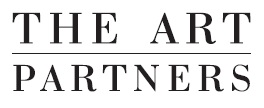This article is contributed to Art Decision by Anastasia Petrovskaia and Maria Korolevskaya, Founders of The Art Partners, art office for international collectors, based in London.
Among the many misconceptions that exist in the art industry, two are quite common – first, that you need to be a millionaire to start collecting; and second, that the collection is not yet big enough for professional management.
While it’s possible to find plenty of “how to’s,” useful tips and guides for art beginners, there’s not enough emphasis on how it’s crucial to properly look after your art works during this fascinating collecting journey. As you acquire more and more artworks, there’ll come a moment when remembering the Who, Where, When and How will be problematic.
Even if cataloguing seems daunting and not as interesting as discovering and buying the art itself, the process of diligently recording your acquisitions will help secure the collection’s value and will save you both money and nerves later on.
There are a few things to consider before preparing an inventory of your collection: it requires time and needs a systematic approach; and someone should be designated as a trusted collection ‘keeper.’ The reason to use collection management services is to make this process less confusing and overwhelming, with a ready-to-go structure and organization. Therefore, we’d like to share important advice for collectors to keep in mind so that you can feel confident.
Start in Reverse
It may take a while to recall all the details of your first purchase, no matter how special it was, so let’s begin with the most recent acquisition in your collection. Not only will you master this procedure by the time you get to the very last item, but you’ll also develop a sense of how much time and energy is necessary to spend on this procedure, and how to schedule it properly in your agenda. If, for example, all the works are in one location, then focus on one room at a time, and gradually make your way through the entire place.
Take Photographs
Visual reference, as detailed as possible, is very important; especially because it can be useful on other occasions (insurance, sale or exhibition programming). As part of professional collection management services, you’ll have a bespoke and secured online inventory profile, with access to the collection at any time. This will greatly assist you in any art business negotiations. Advanced platforms also allow you to see the location where the artwork(s) is stored and to track its shipping.
Smart Numbering
A coherent tracking system for the inventory can tremendously facilitate the life of an art collector. Abbreviations can be like passwords, and as the years go by you might forget and become confused; thus, it’s better to do it right from the beginning. Proper tracking numbers consist not only with the year of purchase and artist’s initials, but also with the media of the work; for example “OP” for oil painting, “PH” for photography, “VP” for vintage print, and so on.
Essential Information
Treat this as an identity card for the artwork. The basics should include: artist name, title, dimensions, media, inventory number and creation date. Additionally, you can include framed dimensions, condition reports, location, and appraisal values.
List of documents
It’s useful to include a list of all documents, such as condition reports, authenticity certificates and shipping reports. Finally, provenance is almost as valuable as the work itself. Keep track of previous owners, dates of sale and exhibition history. It’s worth noting that due diligence must be done prior to any acquisition: ask, see and verify.
We truly hope these tips and advice will help you to manage and protect your collectibles. Unfortunately, the market value of the works and their true value are still separate. Important collections and masterpieces quite often struggle to find a new owner, or miss a great opportunity due to poor collection management and a lack of order in provenance.
The Art Partners, founded by Anastasia Petrovskaia and Maria Korolevskaya, is an integrated office for international art collectors that offers a wide range of specialized services, providing flexible solutions and a personalized approach to each individual client. With its main office in London, they operate between several locations that include Zurich, Paris, New York and Los Angeles.



Comments